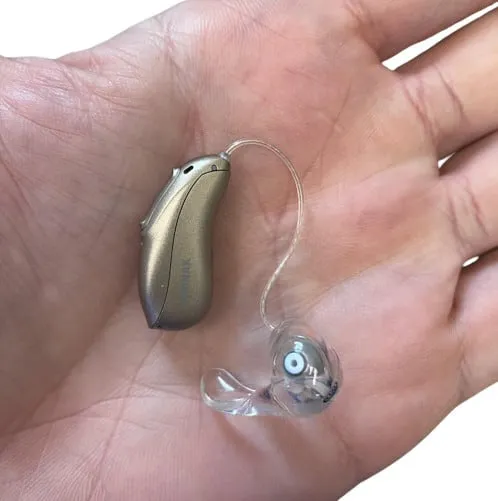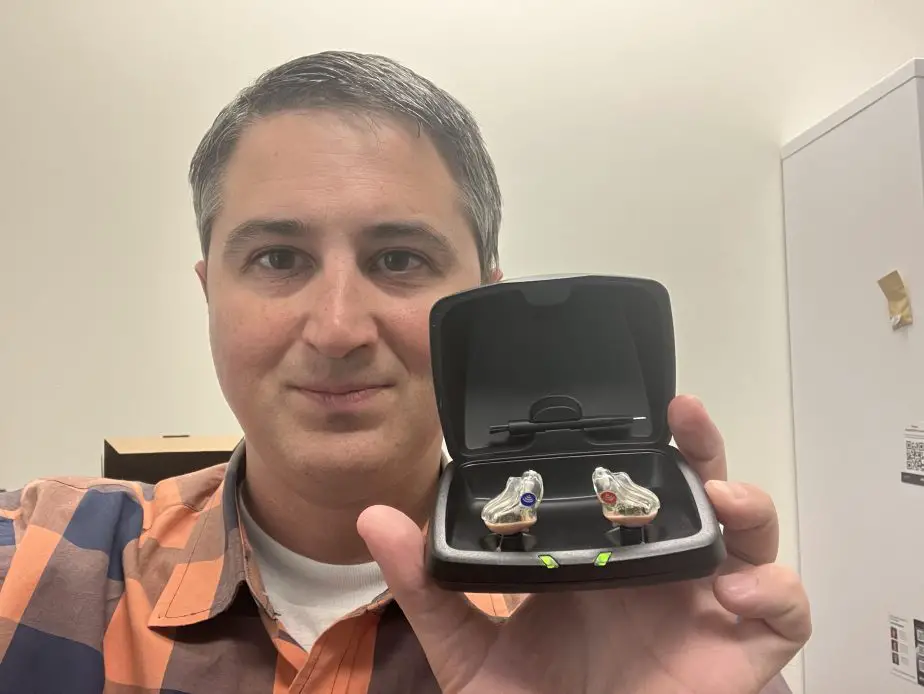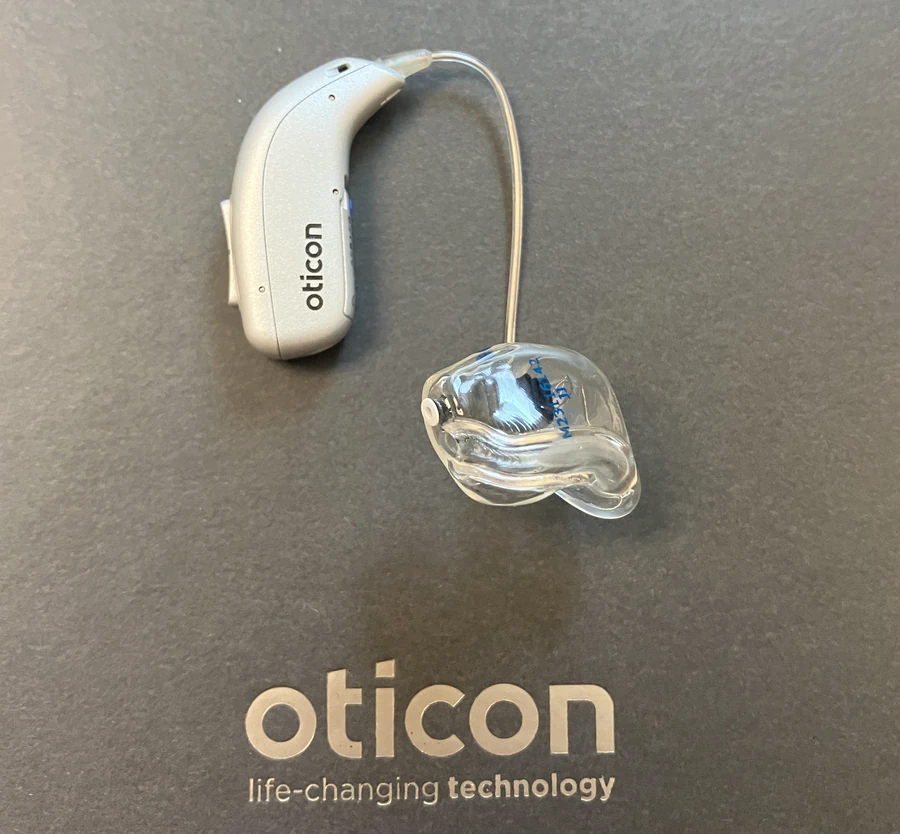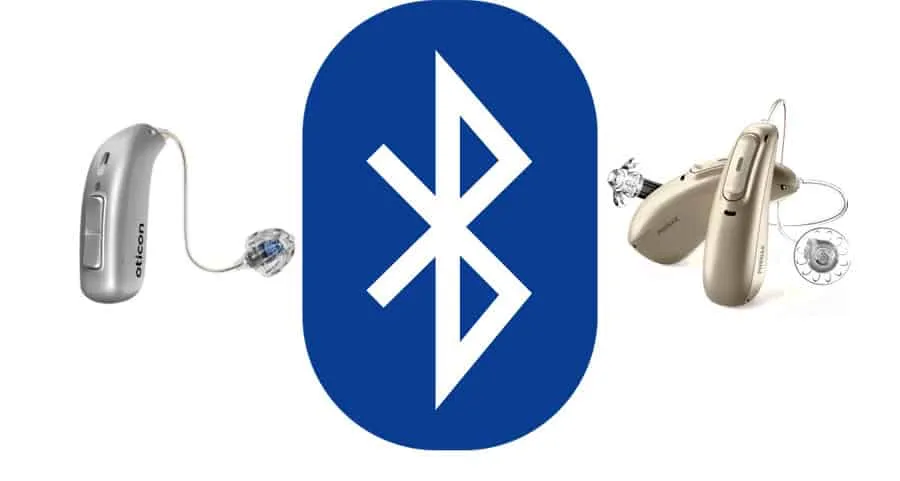This post contains affiliate links.
In the realm of audiology, Phonak, Starkey, and Oticon stand as three of the most prominent manufacturers of hearing aids. Each of these brands offers an array of high-quality devices that cater to a broad spectrum of hearing needs. In fact, these are the top 3 brands that I recommend to those with hearing loss. Though all three brands are exceptional in their own right, they each shine in specific areas, offering different benefits for various types of users.
Phonak: Best for Severe Hearing Loss and Accessory Integration

Phonak is a Swiss manufacturer known for its commitment to providing hearing aids that excel in challenging listening situations. Especially for individuals with severe hearing loss, Phonak is the brand of choice.
- Severe Hearing Loss: Phonak has a reputation for effectiveness in helping users with severe hearing loss, especially in noisy environments. Its devices are equipped with sophisticated technology that enhances speech understanding, even in challenging listening situations.
- Accessory Integration: Phonak shines when it comes to integrating with various accessories such as TV devices, Roger, and remote controls. These accessories can significantly enhance the user experience, making Phonak a go-to brand for individuals who intend to utilize them.
Starkey: Best for User-friendly Experience and In-the-Ear Products

Starkey, the only American-made hearing aid brand, is renowned for its user-friendly devices. Its hearing aids are excellent for seniors and those with dexterity problems, while also offering the best in-the-ear products.
- User-friendly Experience: Starkey hearing aids are designed to be easy to use, making them an excellent choice for seniors and individuals with dexterity issues. The user interface is straightforward, and the devices are simple to handle and adjust.
- In-the-Ear Products: Starkey excels in manufacturing high-quality in-the-ear (ITE) products. If you prefer hearing aids that are discreet and fit comfortably within the ear, Starkey’s ITE models are worth considering.
Oticon: Best for Mild to Moderate Hearing Loss and Sound Quality

Oticon, a Danish manufacturer, is highly recommended for individuals with mild to moderate hearing loss who seek excellent sound quality.
- Mild to Moderate Hearing Loss: Oticon hearing aids are particularly effective for individuals with mild to moderate hearing loss. The devices are designed to enhance clarity and minimize background noise, thereby improving speech understanding.
- Sound Quality: Oticon places a strong emphasis on sound quality. Its hearing aids are built with advanced technology that aims to mimic the way the brain naturally processes sound, resulting in a clear and natural listening experience.
Head-to-Head Comparison
While all three brands offer high-quality hearing aids, they each have their distinct strengths. Here’s a side-by-side comparison of Phonak, Starkey, and Oticon in key areas:
| Feature | Phonak | Starkey | Oticon |
|---|---|---|---|
| Best For | Severe Hearing Loss and Accessory Integration | User-friendly Experience and In-the-Ear Products | Mild to Moderate Hearing Loss and Sound Quality |
| Bluetooth Compatibility | Bluetooth Classic | Low Energy Bluetooth | Low Energy Bluetooth |
| Rechargeable Devices | Yes | Yes, longest battery life | Yes |
| Tinnitus Support | Yes | Yes | Yes |
| Mobile App | My Phonak | My Starkey | Oticon Companion |
| Children’s Hearing Needs | Yes | No | Yes |
Ultimately, the best brand of hearing aids depends on your specific needs and preferences. Whether you prioritize accessory integration, user-friendly experience, or sound quality, you can find a suitable hearing aid from Phonak, Starkey, or Oticon. Each brand has a unique strength, but all are committed to improving the quality of life for those with hearing loss.
Bluetooth Connectivity: A Comparative Analysis of Phonak, Starkey, and Oticon

Bluetooth connectivity has become a standard feature in modern hearing aids, allowing users to connect their devices with smartphones, TVs, and other Bluetooth-enabled electronics for enhanced convenience and functionality. Here’s a detailed comparison of Bluetooth features offered by Phonak, Starkey, and Oticon.
| Bluetooth Feature | Phonak | Starkey | Oticon |
|---|---|---|---|
| Direct Connectivity | Yes (Any Bluetooth-enabled device) | Yes (Apple and select Android devices) | Yes (Apple and many Android devices) |
| Streaming from TV | Via Bluetooth or TV Connector accessory | TV Connector accessory required | TV Connector accessory required |
| Mobile App | Phonak Remote App | MyStarkey App | Oticon Companion App |
Phonak
Phonak’s Bluetooth hearing aids provide a seamless, high-quality listening experience. The brand’s Made For All (MFA) technology allows direct connectivity with any Bluetooth-enabled device, regardless of the brand or operating system, including smartphones, tablets, computers, and TVs. Phonak Bluetooth pairs the same as any other Bluetooth device.
Starkey
Starkey hearing aids offer robust Bluetooth connectivity using LE Bluetooth. Their Made-for-iPhone hearing aids, such as the Genesis, Halo, and Livio models, set a benchmark for seamless connectivity with Apple devices. However, Starkey didn’t limit their reach to Apple users. In early 2020, they extended their connectivity capabilities to include native audio streaming for select Android smartphones, broadening their reach to more users but it still does not work with all Android phones (especially cheaper phones). The new MyStarkey app acts as a control center, allowing users to adjust volume and program settings, stream calls, and monitor health-related data.
Oticon
Oticon hearing aids are equipped with Bluetooth Low Energy technology, enabling direct streaming from smartphones to hearing aids. They can directly stream from all Apple iPhone devices going back to 2014 models, and many Android phones. The Oticon Companion app enhances the user experience by allowing adjustments of volume levels, switching programs, and even tracking the hearing aid if it’s lost.
Sound Quality: A Comparative Analysis of Phonak, Starkey, and Oticon
| Sound Quality Feature | Oticon | Phonak | Starkey |
|---|---|---|---|
| Best for | Music | Speech Clarity and Signal-to-Noise Ratio | Improved Dynamic Range and No Audible Circuit Noise |
| Technology | Mimics Natural Brain Sound Processing | Enhances Speech Understanding and Minimizes Background Noise | Enhanced Dynamic Range and Elimination of Circuit Noise |
Sound quality is a crucial factor to consider when choosing a hearing aid. It can significantly impact the user’s listening experience and overall satisfaction with the device. Let’s compare the sound quality offered by Phonak, Starkey, and Oticon.
Oticon
Traditionally, Oticon has been renowned for offering the best sound quality among hearing aid manufacturers. Its devices are built with advanced technology that aims to mimic the way the brain naturally processes sound. This results in a clear and natural listening experience that is often regarded as superior to its competitors.
In particular, Oticon hearing aids excel in reproducing music. They provide a rich, full-bodied sound that accurately captures the nuances of musical notes. This makes them an excellent choice for music lovers who don’t want to compromise on sound quality.
Phonak
Phonak’s primary goal is to provide the best speech clarity and obtain the highest signal-to-noise ratio possible. This focus makes Phonak devices particularly effective for individuals with more severe hearing losses.
Phonak hearing aids are equipped with sophisticated technology that enhances speech understanding, even in challenging listening situations. They are designed to minimize background noise and amplify speech, allowing users to engage in conversations more confidently.
Starkey
With the launch of the Genesis AI line, Starkey has made significant strides in sound quality. The Genesis AI hearing aids feature an improved dynamic range, allowing users to perceive a broader spectrum of soft sounds and loud sounds without significant distortion.
Moreover, Starkey has successfully eliminated audible circuit noise in its Genesis AI models. This results in a quieter listening experience, free from distracting background noise. The focus on creating a clean, noise-free sound environment enhances the overall listening experience.
Durability and Water Resistance: A Comparative Analysis of Phonak, Starkey, and Oticon

Durability and water resistance are critical factors to consider when choosing a hearing aid, particularly for individuals who lead active lifestyles or live in areas with heavy rainfall. Here’s a detailed comparison of the durability and water resistance offered by Phonak, Starkey, and Oticon.
| Durability and Water Resistance Feature | Phonak | Starkey | Oticon |
|---|---|---|---|
| Water Resistance Rating | IP68+ | IP68+ | IP68 |
| Durability Enhancements | Extra microphone ports to prevent water pressure build-up | Receivers reinforced with Kevlar | Standard |
| Waterproof | Yes (many users swim with them) | Not specifically advertised as such, but have undergone similar testing to Phonak’s devices | Resistant to accidental water exposure |
Phonak
Phonak’s Audeo Life model is a game-changer when it comes to durability and water resistance. It is advertised as IP68+, indicating that it has exceeded the standard IP68 rating for water and dust resistance. The IP68 rating signifies that the device is dust-tight and can be continuously submerged in water under specified conditions.
Many users reportedly swim with their Phonak Audeo Life hearing aids without issue. A unique feature of these devices is that the microphones have extra ports, which prevent the build-up of water pressure. This innovative design enhances both the water resistance and overall durability of the device.
Starkey
Starkey’s Genesis AI hearing aids are also rated IP68, indicating a high degree of water and dust resistance. While they are not explicitly advertised as waterproof, they have undergone testing similar to that of Phonak’s devices, demonstrating their resilience in the face of water exposure, sweat, and salt water.
Furthermore, Starkey has reinforced the receivers of their hearing aids with Kevlar for added durability. This strengthens the devices and increases their longevity, even in demanding conditions.
Oticon
Oticon hearing aids meet the standard IP68 rating, providing a good level of protection against water and dust. While they do not advertise to go beyond this standard, their devices should be able to handle accidental water exposure without suffering damage.
Price Comparison: A Detailed Look at Phonak, Starkey, and Oticon
The price of a hearing aid can vary widely depending on the model, features, and level of customization required as well as the clinic that you are purchasing from. Clinics get bulk pricing from hearing aid manufacturers and so if they work with one manufacturer more frequently the price may be a little less. Let’s compare the prices of the various models offered by Phonak, Starkey, and Oticon using ZipHearing prices.
| Technology Level | Oticon | Phonak | Starkey |
|---|---|---|---|
| Premium | $4,798 | $4,798 | $4,798 |
| Advanced | $3,798 | $3,798 | $3,798 |
| Basic | $3,198 | $3,198 | $3,198 |
| Low | $2,498 | $2,798 |
When purchasing hearing aid models from Oticon, Phonak, or Starkey through ZipHearing, customers will find that the prices for each technology level are essentially the same. ZipHearing’s pricing includes the initial fitting appointment, ensuring that customers receive personalized and optimal hearing aid settings. This allows individuals to choose the brand and technology level that best suits their needs and preferences without worrying about significant price variations.
